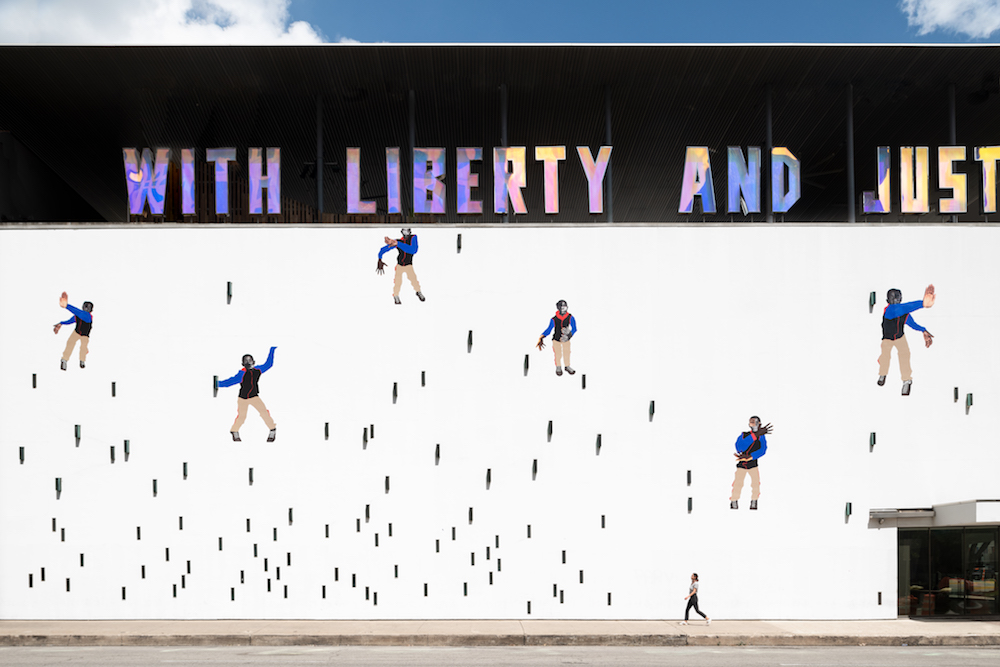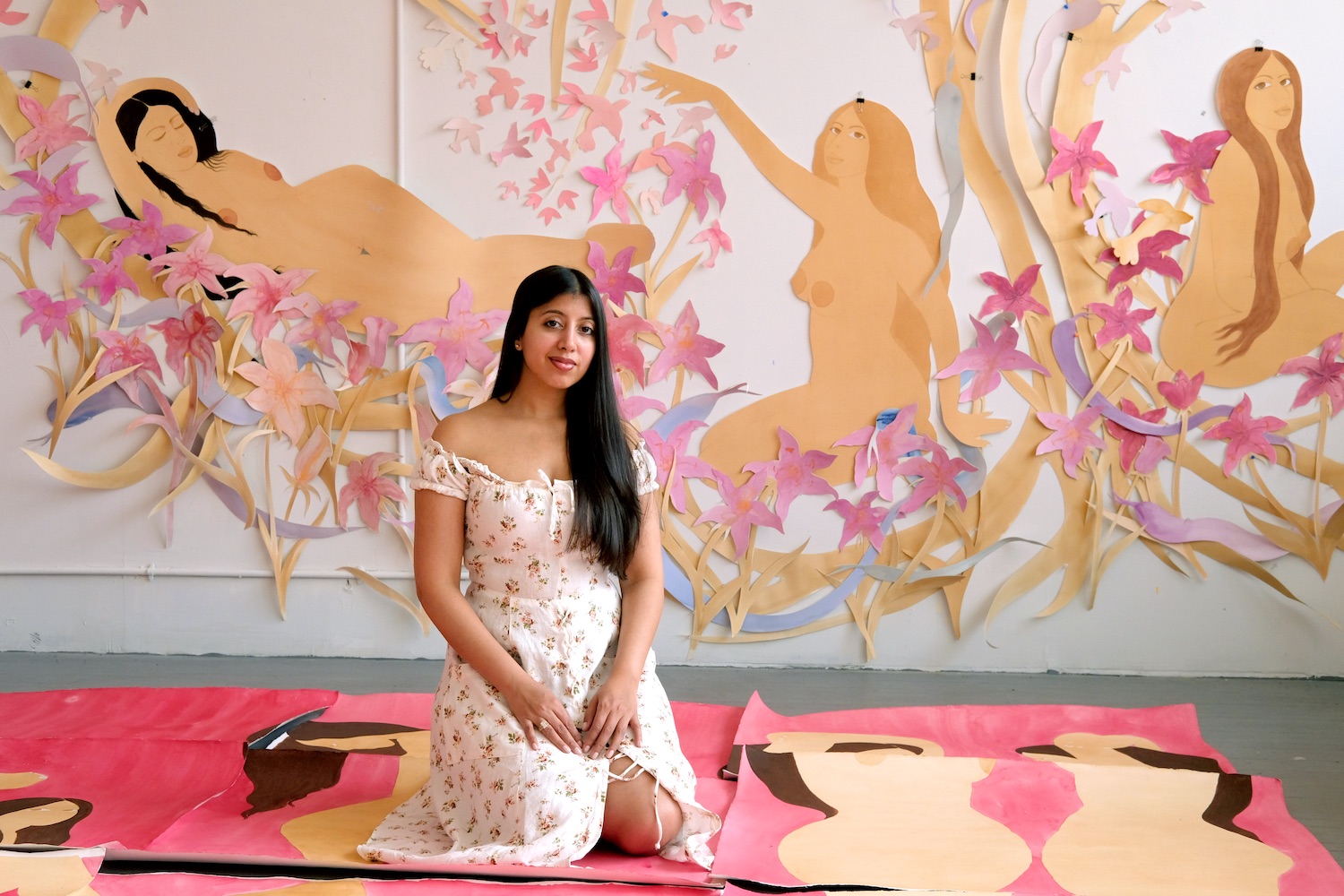Deborah Roberts wants us to embrace our own humanity when looking at her work, to see ourselves in the faces of her subjects. The Austin-based artist creates powerful collages of Black children that are meant to move and remind their viewers of their own childhood, innocence, and experiences.
A series of new works on paper and canvas, as well as text-based pieces by Roberts, are currently on view at The Contemporary Austin through August 15. The exhibition addresses representation and trauma, asking visitors to consider their role in racist systems and biased perceptions. For the show, which will travel to the Museum of Contemporary Arts Denver, Roberts created the public mural on the exterior of the museum’s building on Congress Avenue. Entitled, Little man, little man, it depicts a young Black child dancing carefree, joyously uninhibited and completely himself.
Whitewall spoke with the artist about a new way of talking and engaging with people.
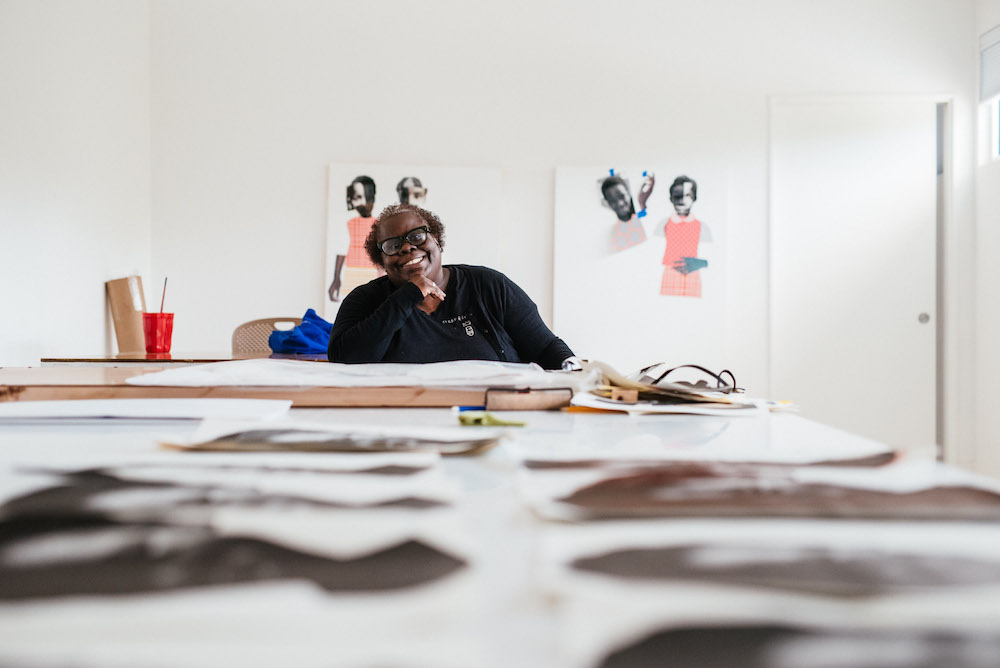
Deborah Roberts at the Rauschenberg Residency in Captiva, FL 2019. Photo by Mark Poucher.
WHITEWALL: “I’m” is an exhibition of all new work. Was there a starting point for you?
DEBORAH ROBERTS: I had already figured out what I wanted to do for the mural on the side of the building. I wanted to talk about disappearance, absence, and presence—all those things as it relates to Black women. Then COVID hit. I started working on what I thought the show needed to look like, and these works just came flowing out.
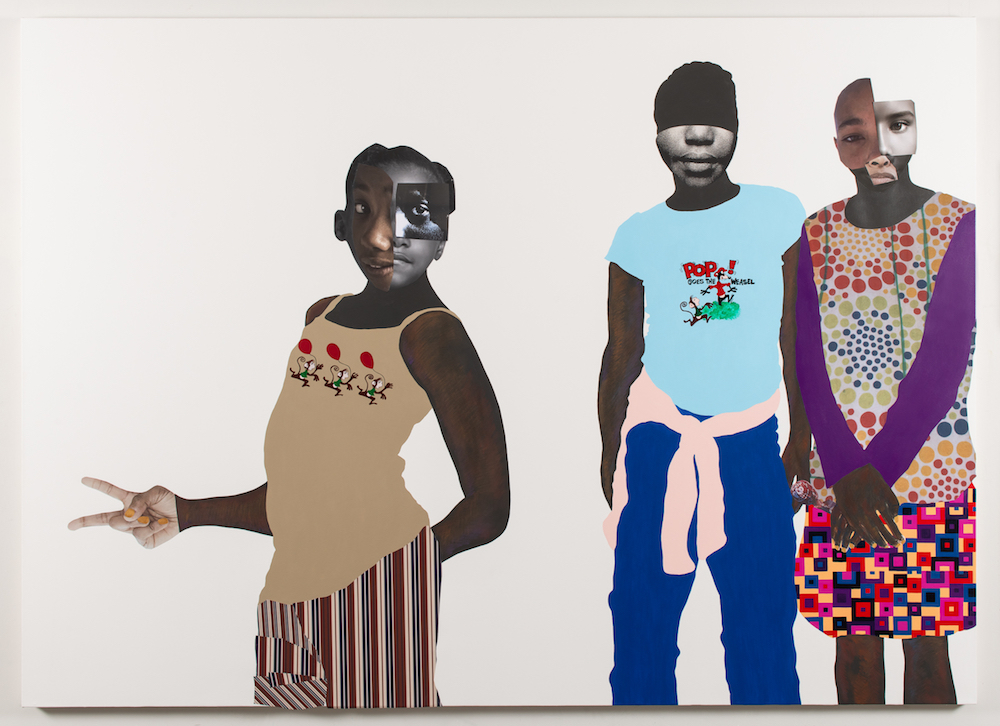
Deborah Roberts, “The duty of disobedience,” 2020, mixed media collage on canvas, 72 x 100 inches, photo by Paul Bardagjy, courtesy to the artist and The Contemporary Austin.
WW: What was the thought process that went into Little man, little man, in terms of it being a public work?
DR: This was the first time I did something like that. It was a great opportunity. At the top of the building it says, “With Liberty and Justice for All.” And we know that’s not true. I saw this video of a little boy dancing—he was just so free. I wanted him to be on that building like that. I know he doesn’t exist like that in the real world—that type of freedom, the movement of his body and face, he was smiling. I wanted that essence to be on that building, that freedom that we want for all kids and Black kids.
The thesis of the work is not always getting through, because we still have these issues of treating children differently, Black children differently. I don’t know why they treat them so differently. They’re just kids.
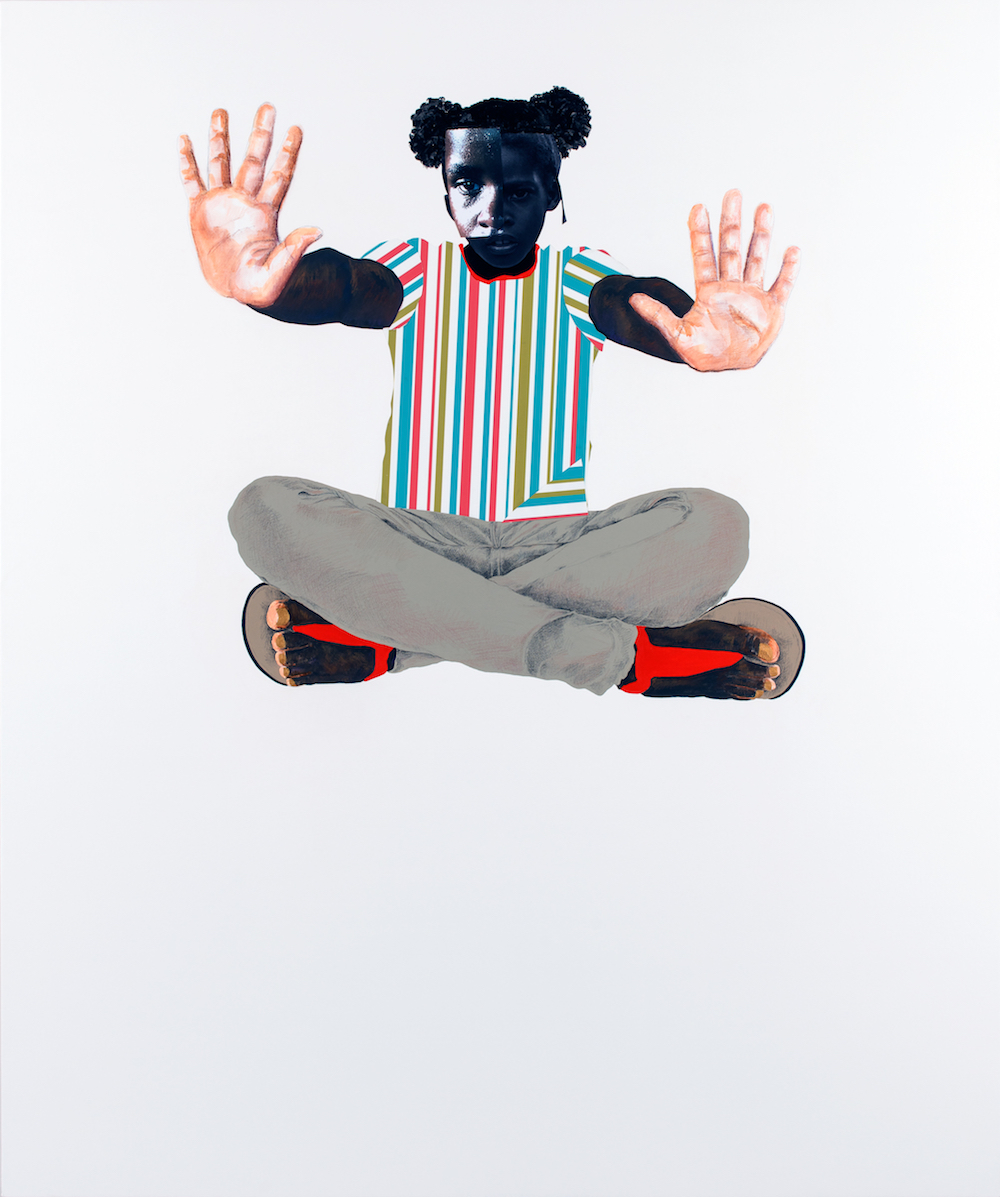
Deborah Roberts, “Fighting all the ISM,” 2019, mixed media collage on canvas, 72 x 60 inches, photo by Paul Bardagjy, courtesy to the artist and The Contemporary Austin.
WW: The work is so moving. You’ve said that the idea is to get people to stop, think, and deal with the humanity. When we look at your work, you almost have to see yourself in it, and therefore relate to these children. They have an innocence . . . they have a future.
DR: Right, they don’t have the years of experiences to draw on to know that it’s not personal. You have to treat people with compassion, and even more so little kids, because that changes who they are. It changes who they’re supposed to be if all of a sudden their world is shook up.
That’s important in my practice.
WW: Do you think about how children perceive the work?
DR: We have a whole group of works we hung at child height. It’s called, “I see you.” It’s right where kids can identify with what I’m talking about. With the adults, it shows we are so much larger and taller than kids, looking down, and that also helps. I haven’t been in dialogue with kids yet, to see what they think of the work. I also want to make sure that little kids, especially Black kids, don’t think that I’m making them ugly. All those things have to play to me actually seeing them and talking with them.
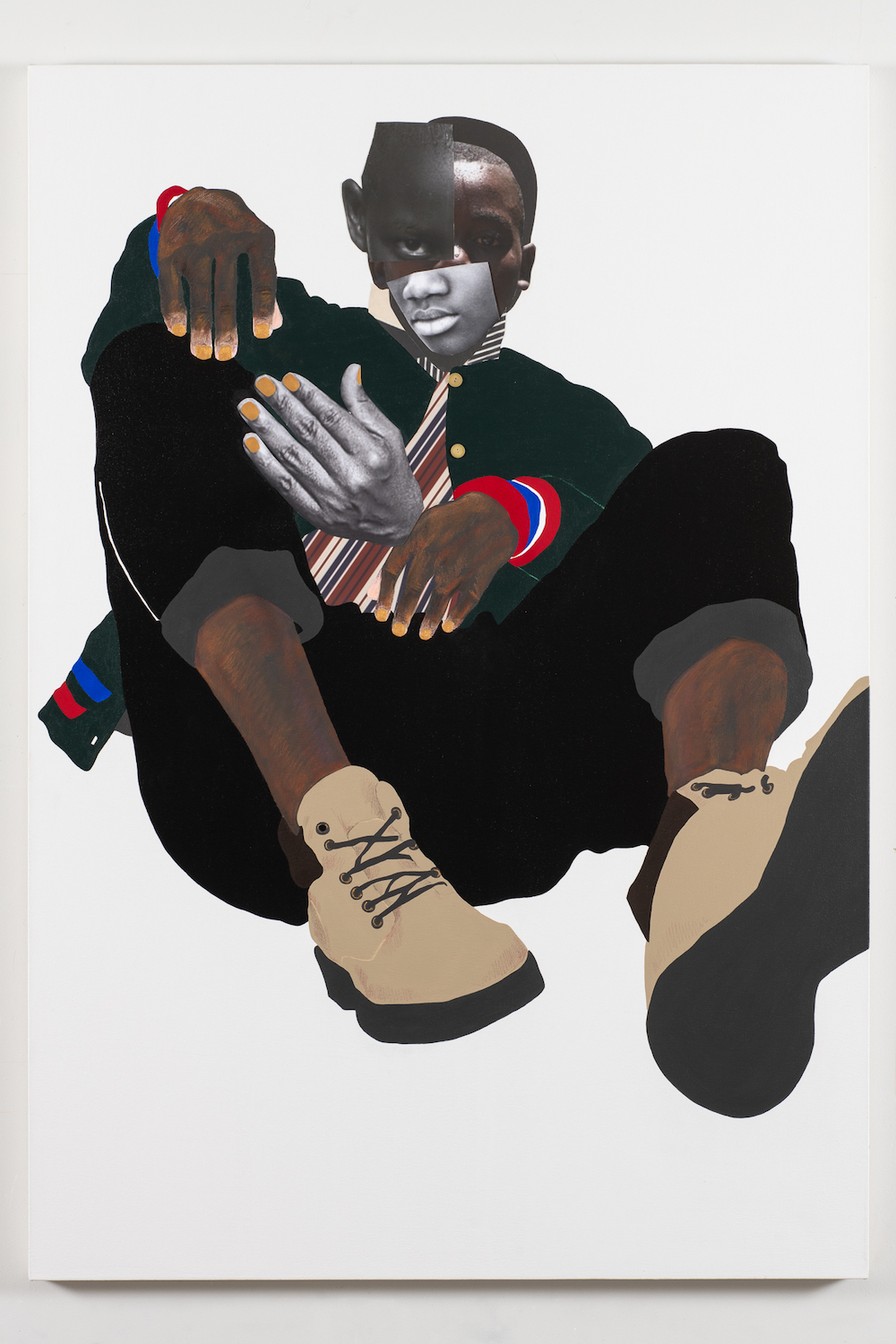
Deborah Roberts, “Jamal,” 2020, mixed media collage on canvas, 65 x 45 inches, photo by Paul Bardagjy, courtesy to the artist and The Contemporary Austin.
WW: You also used a black background for the first time. What was that like?
DR: I don’t want that every time we talk about Blackness it’s through a white lens. The white space is getting smaller in the works, but I think the idea of the blackness and the void of that color is talking about how we are present, but we’re treated as if we’re absent. They are not seeing us and all the issues that happen. The black paintings allowed that to happen. I wanted to talk about how can 400 and 250 women go missing and no one makes a noise about that.
That to me is dark work, and that’s not something I want to spend a whole bunch of time in.
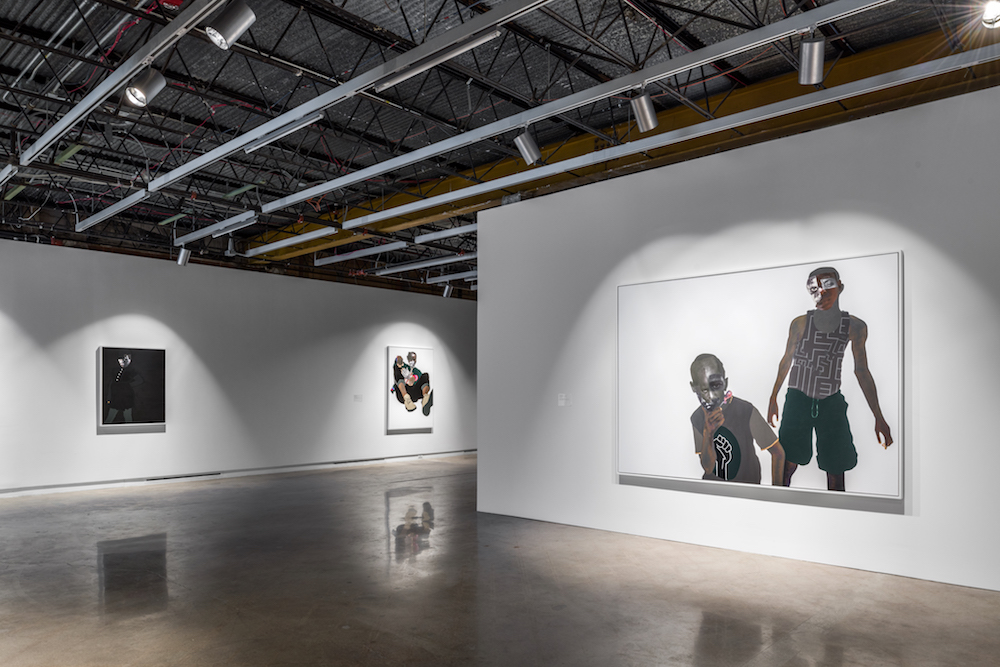
Installation view, “Deborah Roberts: I’m,” at The Contemporary Austin, 2021. Photo by Colin Doyle, courtesy to the artist and The Contemporary Austin.
WW: And what about the text-based pieces?
DR: I really love text. I remember back in 2016 I was trying to figure out how can we talk about Black women and Blackness without using the visual form. I thought about the braid, how everybody gets their hair braided and combed by your mother up until you’re 10, maybe into your teens. The idea of over under back through—the movement of that whole thing and putting that in text. If I write that out, everybody’s going to recognize it. You’ll see it. That was a first inkling of doing text. How can I talk about classicism and colorism—all the isms, as I say—without doing a visual form of it? Text allowed that.
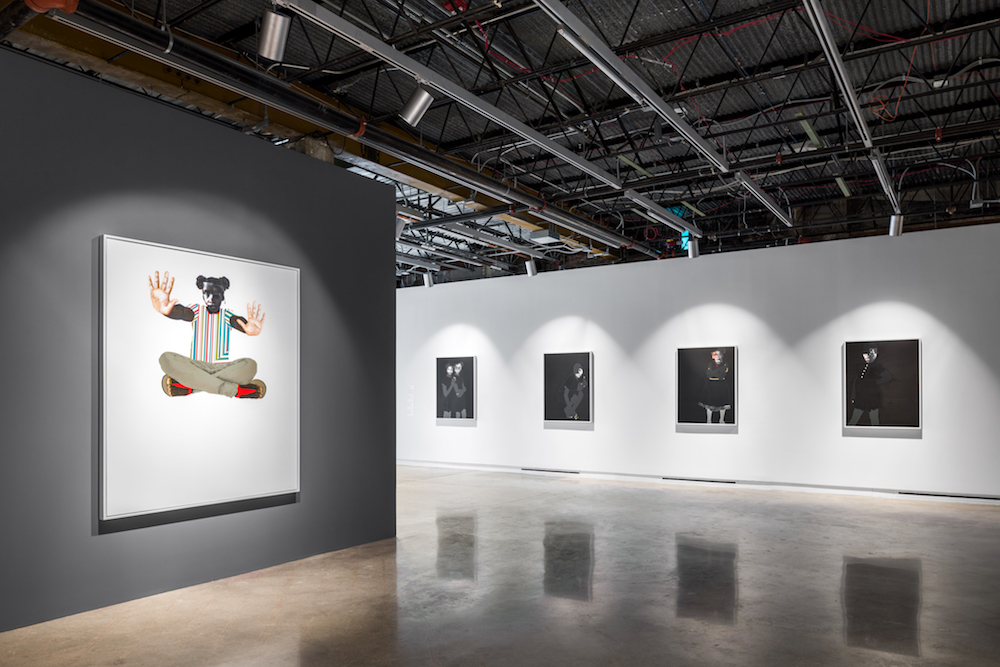
Installation view, “Deborah Roberts: I’m,” at The Contemporary Austin, 2021. Photo by Colin Doyle, courtesy to the artist and The Contemporary Austin.
When I did the installation in the show, it’s based in text and sound. I wanted you to get into the box that is enclosed by all these missing names of missing women, Black women, sitting on a steel bench, looking at a full-length mirror, where somebody is saying they are disposable. What is you place in that? How do you feel? You have to face your own self. That’s a new way of talking and engaging people. It is not yelling at them, it’s asking you, are you complicit in this whole idea of someone feeling horrible all the time?
Recognizing that someone else has feelings and emotions, that humanizes them. We’re not a different species; we’re the same species of human beings. Those are things I’m trying to get through in my work.
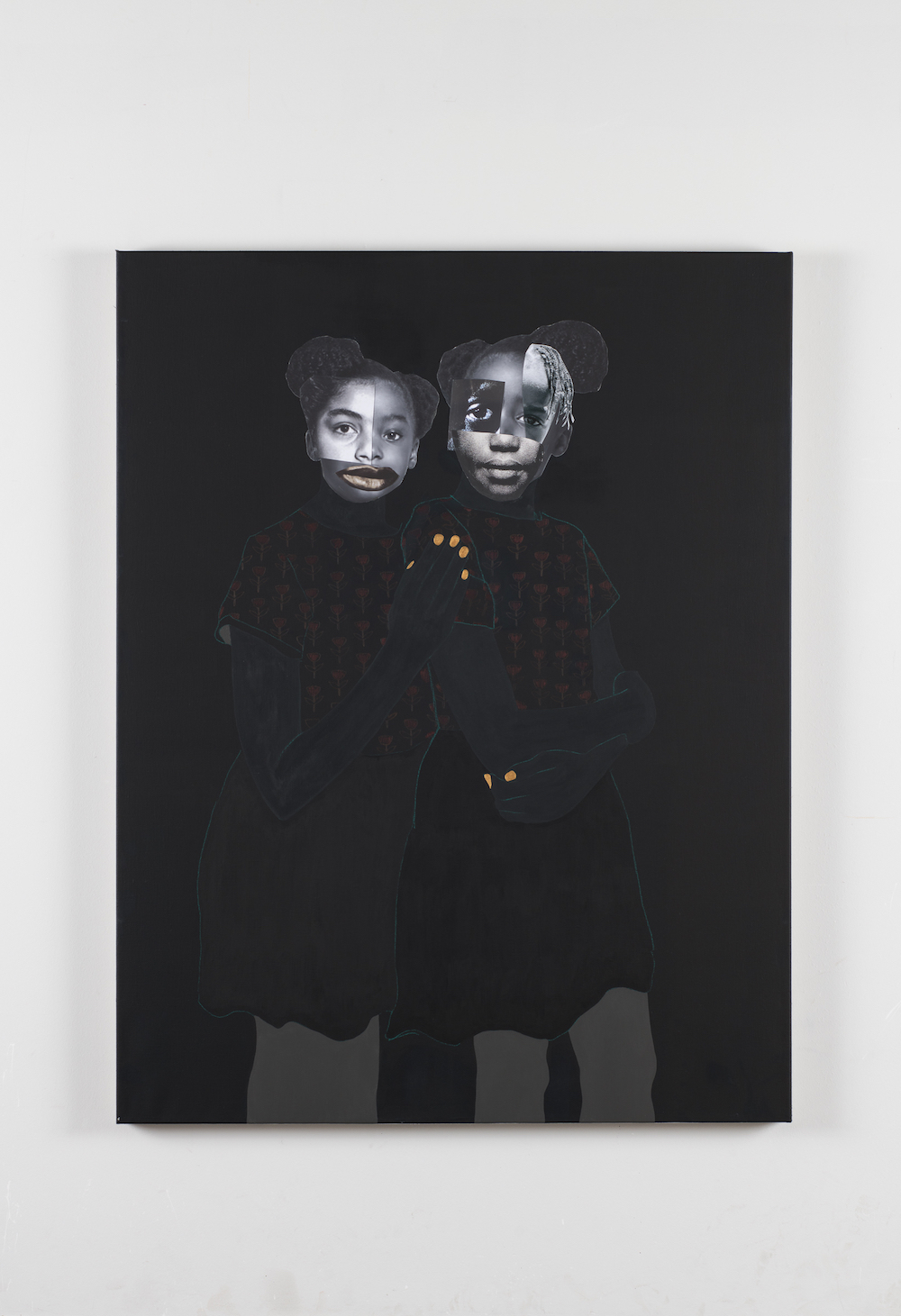
Deborah Roberts, “Portraits: When they look back (No. 3),” 2020, mixed media collage on canvas. 45 x 35 inches, photo by Paul Bardagjy, courtesy to the artist and The Contemporary Austin.



